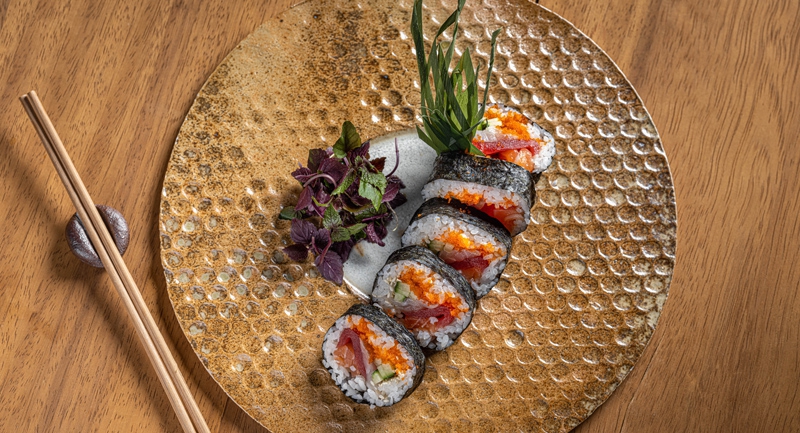
Best of Budapest & Hungary
Measure of Quality
Spago by Wolfgang Puck Budapest offers the city's most unique selection of sushi
With the arrival of spring, the sushi menu of Spago by Wolfgang Puck Budapest has debuted thanks to the collaboration of Wolfgang Puck Fine Dining Group's Culinary Development Director Tetsu Yahagi and Executive Chef István Szántó.
The menu, created using the freshest and best quality seasonal ingredients, reflects the best of Japanese cuisine in a way that will captivate every guest.
Tetsu Yahagi, who has over 30 years of experience in the art of sushi making, has studied from some of Japan's most renowned master chefs and is currently responsible for the culinary concepts of 11 restaurants worldwide. All his dishes showcase a meticulous attention to detail, a creative approach and mouth-watering flavour combinations. Together with Master Chef Wolfgang Puck, Tetsu Yahagi has created a menu that reflects the very best of Japanese cuisine. The two are always working closely together to raise the culinary standard of the world and now in Hungary, together with Spago's Executive Chef István Szántó, they have created a sushi menu for the Hungarian audience that is understandable yet authentic.
Ingredients from all over the world
The idea behind the concept at Spago was to make the original Japanese sushi using the best quality, freshest fish possible, but within the framework of the Spago concept, to make it as enjoyable as possible for the local audience. Under the professional guidance of Wolfgang Puck, sushi is created in a much more international and understandable way, while the ingredients and techniques follow the traditional line. The menu is divided into two sections, as in addition to the traditional sushi rolls, the menu also includes unique and creative options under the heading of freshly marinated dishes.
The menu also features dishes that have been a hit at other Spago restaurants around the world, such as the scallop ceviche with marinated green papaya and Thai chilli garlic sauce, from Hawaii, or the California Roll with crab, masago and avocado, also from the island. "My personal favourite among the many is the satisfyingly spicy, vibrant Hamachi Sashimi with Szechuan Marinade, but it's also hard to resist our Salmon Roll with House Ponzu" - said Executive Chef István Szántó. "The dishes are made with fresh and high quality ingredients, and the fish used for them all come from different sources. Scallops come from the Japanese coast, salmon from Scotland, gilthead bream from Italy and tuna from Sri Lanka. All served in a unique presentation."
In addition to sushi, the restaurant has also prepared a wide selection of sake served in handmade cups. The unique cups, made by ceramicist Ádám Szabó, are available in 20-30 different colours, and each guest can choose the one that suits their taste. One of Hungary's finest ceramists has designed not only cups, but a complete dinner set to accompany the sushi menu, offering a truly complex experience for the guests. "We go to a restaurant not just for the food in the physical sense, but for a complex experience that feeds our soul. Dish choice can take that experience to new levels, but it can also ruin it. The plate is as important an element of this complex recipe as the immaculate cleanness, the kind staff, the quality of the ingredients or the personality of the chef" - said Ádám Szabó.
The ceramic artist has been working closely with the Spago by Wolfgang Puck team for a year and a half now. "For sushi and related sake dishes, it was very important that each object had a unique, distinct character. I believe that just as we are not the same, our dishes should be different too. Tetsu and I found common ground very quickly as I use a Japanese firing technique, high heat wood-fired ceramic firing" - Ádám Szabó revealed. "In Japanese culture, beyond the visual, the touch, the tactility and the material quality of the objects are of great importance. They try to influence our complete sensation and create harmony in it. Tetsu specifically requested that the sake cups should be made of materials of different fineness, shape and thickness. It's a very different experience to drink from a thicker, closed, coarser stoneware cup than from an open, silky porcelain cup. The aim was to allow the guest to experience these differences. Proximity to nature was also an important consideration in the design of the dishes. One plate evokes the sight of a lake in the mountains, another of snow melting in the fields. These objects celebrate the beauty of imperfection."




